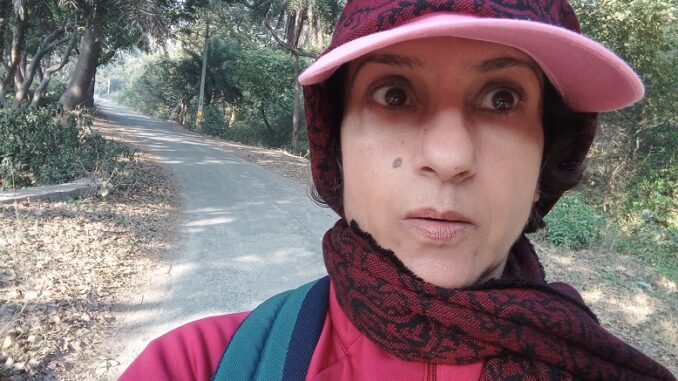
Every mound and every tree in Hastinapur exudes an aura of mythology that narrates the era of Mahabharat. Loaded with footprints of the epic Mahabharat, situated on the ancient channel of sacred Ganga, Hastinapur intrigued me.
Hastinapur is testimony to royal conflicts and princely anecdotes of Pandav and Kaurav. In the Mahabharat period Hastinapur became a land of sin and of virtue. This land insulted Draupadi, the wife of Pandavas. But this land also marked the arrival of savior Krishna. Saints showed me the place where Draupadi was humiliated and a tree where lord Krishna rested.
Hastinapur is a small town in Uttar Pradesh state of India, divided in two parts, Hastinapur Kaurwan and Hastinapur Pandawan. I walked two whole days in Hastinapur through forests and flood plains of river Ganga, on road and off road. Interacted with office bearers of Archeological Survey of India at the excavations site. Discussed with saints and talked to local people to get different versions of mythology and folklore.




There are many beliefs about Pandeshwar temple in Hastinapur. One belief is that Yudhishthir, the eldest of Pandavas, had established the Shivaling at the Pandeshwar temple before the war of Mahabharat to seek blessings to win the war. Other belief is that the greatest philanthropist Karan had donated Shivling to the temple. A priest told me that Pandavas had their education in this temple. There is a tunnel in the premises which is said to be used by Pandavas. There is also a structure where Bhishma Pitamah met Maa Ganga.
In 1798, Raja Nain Singh of Parishatgarh, nearby town of Hastinapur, got Pandeshwar temple renovated.


The land of Hastinapur is also a prominent pilgrimage of Jain faith. Sprawling Jain temples dominate the landscape of Hastinapur. There are three Nishia ji as well in dense forests of Hastinapur associated with four Tirthankaras. In Jain faith, Tirthankara is a supreme savior and spiritual leader of dharma. Nishia ji is a place where Jain Muni lives, a place of immense religious value.


Hastinapur has been extensively used by freedom fighters as well. They used to hide at Raghunath Mahal in thick forest and plan their actions. Raghunath Naik, uncle of Rani Lakshmibai, got Raghunath Mahal constructed and lived here secretly.

My Ganga walks enable me to explore heritage sites along Ganga deeply.

The tour of Hastinapur sounds so interesting since it has such a spiritual background. I remember many tales about the Pandavas and Mahabharat from my grandmother.
Indeed.
WOW so much history. Sounds like an amazing trip.
Yes it was.
It sounds like you had a great trip exploring this area with its amazing history and people.
Absolutely so.
Wow, your blog post about Hastinapur is simply amazing! I loved how you brought the city’s rich history to life with vivid descriptions and beautiful photos. It’s clear that you put a lot of effort into your writing, and it definitely paid off. Keep up the great work!
Thank you greatly for enjoying my writing.
Wow it is amazing that you get to explore and experience such amazing heritage sites. Thank you so sharing your adventures and photographs.
Thank you.
My first to hear of the Jain faith. The temples make a noticeable architectural experience for the walker.
Indeed so.